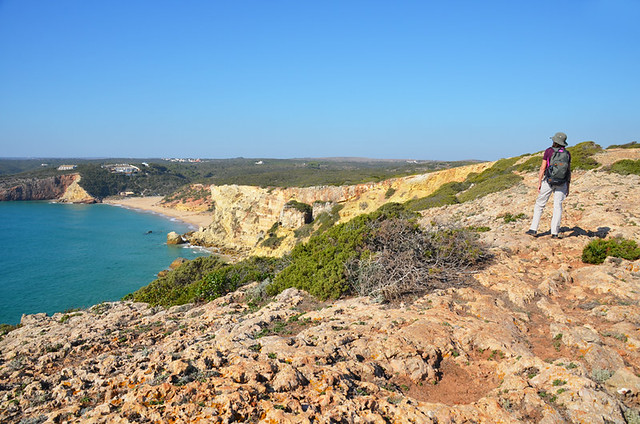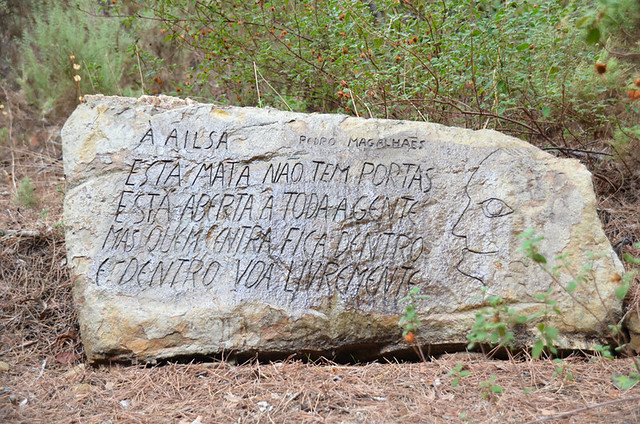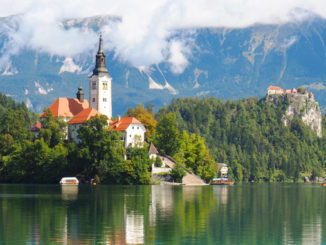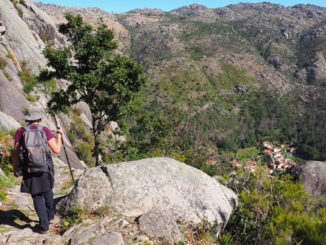I have to confess the Algarve isn’t my favourite part of Portugal. It’s not that I don’t like it, although there are parts I’m in no rush to return to, it’s just that so far I prefer the other areas of the country we’ve experienced. There’s a homogeneous familiarity around the Algarve’s popular resort areas you can find in countless sun and sand resort areas across Europe that doesn’t ring my bell when compared to the wild plains and hilltop villages of Alentejo, the fishing communities and agricultural inland towns of central Portugal, and the elegant personality and rugged hills of the verdurous north.

Of all the places we’ve hiked and dined around Europe, it’s the area where I’ve taken the fewest photos of food. I didn’t realise that till I looked for foodie photos after one visit and found they were severely lacking. But we’d visited in November and lots of coastal restaurants were closed. That doesn’t happen in areas where restaurants exist for a local population first and foremost. All of which might sound like a bit of an Algarve hatchet job, so let’s get those negative aspects out of the way and move on to one where the Algarve glows golden in my mind, walking.
There’s a diversity to Portugal’s countryside that surprises us on a regular basis. Where the Algarve’s resort scene doesn’t appeal, the range of walking that exists in the region is a different matter. This ranges from delightful, gentle littoral paths near popular resorts to wild coastal ways. Head inland and it’s a different world, with trails winding through dense forests and across lush valleys brimming with an abundance of fruit and wild flowers.

Coastal walking in the Algarve
One of the most popular coastal walks in the Algarve is the Seven Hanging Valleys trail, and deservedly so. We started from Benagil, crossing a magical, honey-coloured landscape of abstract rock formations; the imaginative creations of the trio of artists known as wind, sea, and rain. The natural eye-candy changes with each indent in the cliffs – huge rock arches in one; deep, dark, intriguing caves in another. Turning up regularly are postcard-perfect golden sand coves – Praia da Marinha is considered one of the 100 most beautiful beaches in the world (so an info board tells us). There’s no denying it’s a looker of a beach. On the clifftop the air is perfumed by gum cistus and the wildlife includes warblers,egrets, and flocks of expat walkers. It can be busy, but it is a peach of a coastal walk.

Further along the coast offers similar ingredients but fewer people. A route heading west from Luz (not a place which charmed us – too many bars with Brit names and blackboard menus featuring dishes for folk who like to steer clear of unfamiliar ‘foreign’ food – is transitional, a bridge between the world of resorts and a more traditional Portugal. Burgau typifies a gradual change of personality that affects towns and villages rather than the landscape. Our route in passes a whitewashed cottage whose wall has a street sign with ‘Borough of Islington’ on it. Leaving the village, we see a bus shelter painted with an amusing scene of rural Portuguese life.
Beyond Burgau there’s as much chance of encountering sheep and goats roaming freely as there is of meeting other walkers. A circuit from Figuera, a small town with a likeable, sleepy but not staid personality, takes in gorgeous gold sand beaches. They’re empty even though the temperature is mid 20s.

Best of all is the Costa Vicentina, where the Algarve meets Alentejo. This is a resort-free wild west where sandy paths which suck the energy from legs link sprawling beach after sprawling beach. It’s empty in November save for a few surfers and a handful of neo-hippy travellers. Praia da Bordeira and Amoreira are like mini Saharas on which I wouldn’t be surprised to discover the bleached bones of a sun-seeking tourist who had expired en route to the sea. Most people park and walk to the beach, missing out on routes which wind through kermes oaks and sculpted stone pines, or between thickets of cistus, juniper, crowberry and, a favourite of ours when paired with fish, samphire. In these untamed lands are otters, kingfishers, and tortoises. Not that we actually spot any, but I’m willing to trust the info boards which tell me they exist.

Walking in the wetlands
My favourite Algarve walk is short and takes place as dusk is rapidly becoming nightfall. There is a dream-state quality of light at the Alvor wetlands. The mirror-calm waters glisten with a metallic, silky quality whilst the sky could have been painted by Monet. We walk briskly through a descending curtain of darkness atop grassy dykes. On one side, ghostly flamingos goose-step in slow motion. On the other, a couple of shellfish fishermen wade through mud banks with the same slow and considered movements; different species, similar intent. It is spiritual, nature’s benzodiazepine.

Sitio das Fontes is thirty kilometres from Albufeira, but might as well be a thousand and thirty. Although we saw more species of birds beside the river at nearby Silves than we do at Sitio das Fontes, whose lagoons, creeks and waterways are a haven for birds (at the right time of the year), it’s another watery world with a serenity-inducing influence. Designated paths take in an old tidal mill, springs, picnic areas, wooden bridges, and an amphitheatre. It’s an area for locals to enjoy and accordingly gets busy at weekends and in summer months. On a weekday in winter it remains virtually empty of people.

Walking in the Algarve hills
It’s the same anywhere known for sun and sand tourism, most visitors don’t stray far from hotel pools and beaches at the coast. Which means, head any distance inland and you find a completely different world. Barão São João is just 15 minutes from the sea and was clearly once a traditional inland town. Now it feels more like an artists’ commune where strolling the streets is akin to being in an open air art gallery. It’s also the gateway for walking in the Mata Nacional (national forest), a woodland consisting of eucalyptus, cork oaks, and stone pines where a poets’ trail embodies the character of the nearby town. We spend ages trying to find the legendary Pedra do Galho Menhir (cock rock – I can’t help but think of Priscilla, Queen of the Desert when I see its name) where, when you stroke it, it’s said you’ll hear a cockerel crow. We finally find the rock and are so taken aback by its diminutive ordinariness we forget to stroke it. No cock on a rock here.

And then there’s Monchique, the Algarve that’s nothing at all like the Algarve many might visualise. Monchique is a pretty-ish little hill town surrounded by a dense, green carpet of pines, cork oaks, chestnut trees and Portugal’s scourge, eucalyptus. It was the first place in Portugal we spotted medronhos, strawberry trees with vibrant red fruits which have equally vibrant orange flesh (firewater made from them can bought in the town). Paths cross fertile valleys full of citrus trees, beehives, and wild shrubs – campanula, rhododendrons, and euphorbias – before we wind through the forest on a more demanding trail in order to share the 360 degree viewpoint at the summit of Serra de Picota with Bonelli’s eagles. Since the forest fire which devastated the area in 2018, the views are even more open than our previous visit. Thankfully most of the rest of the area around Monchique looks much as it did pre-forest fires.




Be the first to comment